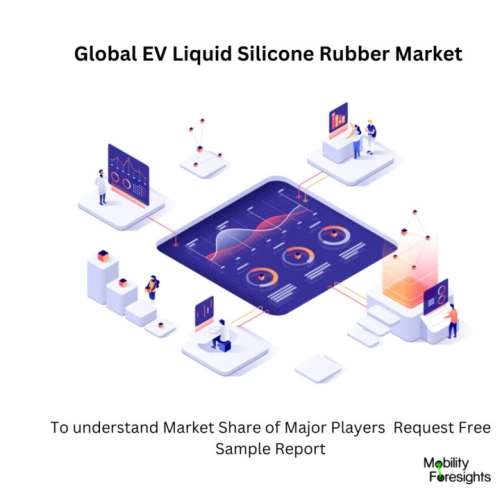
- Get in Touch with Us

Last Updated: Apr 25, 2025 | Study Period: 2024-2030
Liquid silicone rubber is a high-purity, two-component platinum-cured silicone, ideally formulated for the production of technical parts, where strength, resistance and high quality are a must. LSRs are viscous, but pumpable materials, mostly processed through liquid injection moulding (LIM).
Liquid silicone rubber is a highly versatile material, and new applications for it are discovered and tested every day. It is a mainstay in healthcare manufacturing, automotive component manufacturing, electronics and consumer products, gaskets and other hardware, and many other markets.
The unique physical properties of silicone rubber are a result of its chemical structure. Silicone rubber is an elastomer consisting primarily of a chain of molecules known as a siloxane bond (-Si-O-Si-).LSR is water-resistant and doesnât break down when exposed to solvents.
Itâs also available in several hardness levels and a range of colors, making it a versatile option for a wide variety of products. LSR is also a low-viscosity material, meaning it flows very easily during the moulding process meaning it is well suited for high cavitation moulds used for high output requirements.

Global EV liquid silicone rubber market accounted for $XX Billion in 2022 and is anticipated to reach $XX Billion by 2030, registering a CAGR of XX% from 2024 to 2030.
Dow launches a new series of liquid silicone rubbers. Multinational chemical producer Dow has introduced a new range of primerless, self-adhesive, self-lubricating liquid silicone rubbers. The new SILASTIC SA 994X LSR series is designed for two-component injection moulding with thermoplastic substrates, and is geared toward the mobility and transportation industries.
The new product range is intended for automotive applications that include connector seals, battery vent gaskets and radiator gasket seals for electric and hybrid vehicles as well as environmental protection seals for autonomous vehiclesâ lidar and radar housings.
the company says that the products offer manufacturers such benefits as durable adhesion under heat and humidity, rapid development of bond strength, 12-month shelf life, and instant and robust adhesion to a variety of plastic and metal substrates without the need for further heat treatment.âAs the requirements of automotive OEMs and tiers continue to evolve in response to the rapid change occurring throughout the industry.
| Sl no | Topic |
| 1 | Market Segmentation |
| 2 | Scope of the report |
| 3 | Abbreviations |
| 4 | Research Methodology |
| 5 | Executive Summary |
| 6 | Introduction |
| 7 | Insights from Industry stakeholders |
| 8 | Cost breakdown of Product by sub-components and average profit margin |
| 9 | Disruptive innovation in the Industry |
| 10 | Technology trends in the Industry |
| 11 | Consumer trends in the industry |
| 12 | Recent Production Milestones |
| 13 | Component Manufacturing in US, EU and China |
| 14 | COVID-19 impact on overall market |
| 15 | COVID-19 impact on Production of components |
| 16 | COVID-19 impact on Point of sale |
| 17 | Market Segmentation, Dynamics and Forecast by Geography, 2024-2030 |
| 18 | Market Segmentation, Dynamics and Forecast by Product Type, 2024-2030 |
| 19 | Market Segmentation, Dynamics and Forecast by Application, 2024-2030 |
| 20 | Market Segmentation, Dynamics and Forecast by End use, 2024-2030 |
| 21 | Product installation rate by OEM, 2023 |
| 22 | Incline/Decline in Average B-2-B selling price in past 5 years |
| 23 | Competition from substitute products |
| 24 | Gross margin and average profitability of suppliers |
| 25 | New product development in past 12 months |
| 26 | M&A in past 12 months |
| 27 | Growth strategy of leading players |
| 28 | Market share of vendors, 2023 |
| 29 | Company Profiles |
| 30 | Unmet needs and opportunity for new suppliers |
| 31 | Conclusion |
| 32 | Appendix |